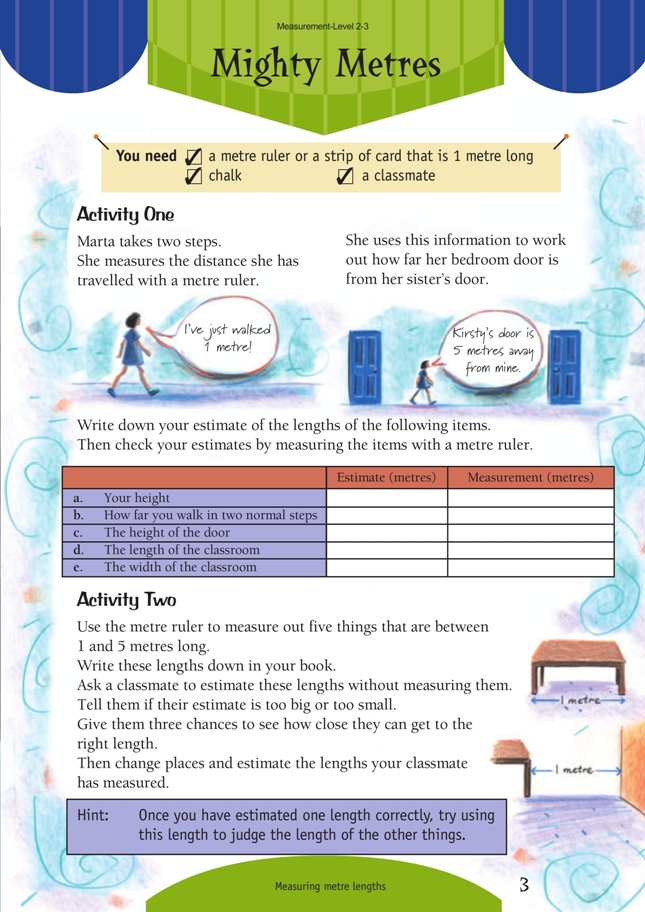This is a level 2 measurement strand activity from the Figure It Out series.
A PDF of the student activity is included.
Click on the image to enlarge it. Click again to close. Download PDF (165 KB)
estimate and measure lengths in metres
FIO, Level 2-3, Measurement, Mighty Metres, page 3
chalk
classmate
Activity One
This activity focuses on length.
The use of body measures has been a common practice in the historical development of measurement in most cultures. Paces have long been used as an informal measure of length.
This activity aims to make the students proficient at estimating short distances in metres. For most of them, their natural walking stride will be about 50 centimetres or half a metre. They will need to halve the number of steps they have taken to estimate the number of metres involved in the distance they travel.
Activity Two
After some experience of measuring, such as in this activity, you can encourage students to estimate distances outside the classroom. Students will need to apply a different benchmark, such as 10 metres or 20 metres. Students may be given Pirates instructions, which involve paces and/or metres. For example:
“Walk 40 paces towards the library.”
Other activities include marking out an 800 metre triathlon circuit around the school grounds; working out the distance another student covers during interval (playtime); solving data-related problems such as, “How far can an 8-year-old child throw a tennis ball?” or “How far does the shadow of your school’s tallest tree move during the day?”; and drawing scale maps of the classroom on 1 centimetre square paper (1 cm : 1 m).
Answers to Activity
Activities One and Two
Answers will vary.
